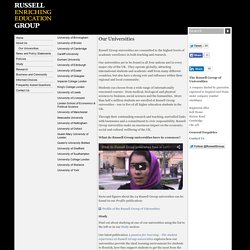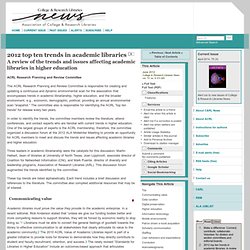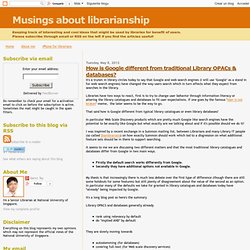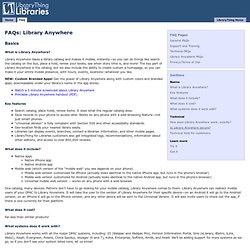

JCU Library Technologies: Removing Library Jargon from our Home page - what Google Analytics tells us. In January I tend to catch up on all my statistics collection for the last year - and if I can, do some cursory analysis.

I've been using Google Analytics Campaigns to track the use of links on the Library's home page - which was revamped around this time last year after usability testing with students. JISC research scholary reading UEA. Library 2.0. Million+: Our members. Russell Group: Our Universities. Russell Group universities are committed to the highest levels of academic excellence in both teaching and research.

Our universities are to be found in all four nations and in every major city of the UK. They operate globally, attracting international students and academic staff from many different countries, but also have a strong role and influence within their regional and local community. Students can choose from a wide range of internationally renowned courses - from medical, biological and physical sciences to business, social sciences and the humanities. More than half a million students are enrolled at Russell Group universities - one in five of all higher education students in the UK. Through their outstanding research and teaching, unrivalled links with businesses and a commitment to civic responsibility, Russell Group universities make an enormous impact on the economic, social and cultural wellbeing of the UK.
2012 top ten trends in academic libraries. A review of the trends and issues affecting academic libraries in higher education ACRL Research Planning and Review Committee The ACRL Research Planning and Review Committee is responsible for creating and updating a continuous and dynamic environmental scan for the association that encompasses trends in academic librarianship, higher education, and the broader environment, e.g., economic, demographic, political; providing an annual environmental scan “snapshot.”

The committee also is responsible for identifying the ACRL “top ten trends” for release every two years. In order to identify the trends, the committee members review the literature, attend conferences, and contact experts who are familiar with current trends in higher education. These top trends are listed alphabetically. Communicating value Academic libraries must prove the value they provide to the academic enterprise. Data curation Digital preservation. Slides on copyright for #openlincoln.
“Shhhh? The Reality of New Technologies and their Place in Libraries” « louiselib. On the 8th of May I attended an event held by the Northern Division of CILIP ARLG held at Teesside University.

An interesting start of missing the original train at Central Station due to delayed metros and then getting into a taxi where the driver decided to drive over some moving bollards. All a bit stressful! I was speaking at the event along with my colleague at Newcastle University, Moira Bent. We were highlighting the range of technology we have within the library; both for our users to use and ourselves. We’d brought along an array of gadgets including our laptops and ebook readers which we loan to students of the University. After a welcome from event organiser, Leanne Young we started with the programme of day.
Ned really puts together a cracking presentation and always manages to cover a lot of content and ground without leaving you feeling overwhelmed. Ned outlined how new technologies should be used to help people get from A-B. QR codes Ned’s main tips for issuu were: Lemontree. How is Google different from traditional Library OPACs & databases? It's a truism in library circles today to say that Google and web search engines (I will use "Google" as a stand in for web search engines) have changed the way users search which in turn affects what they expect from searches in the library.

Libraries have two ways to react, first is to try to change user behavior through information literacy or altering the library catalogues and databases to fit user expectations. If one goes by the famous "User is not broken" meme, the later seems to be the way to go. Primo Listserv mail list archive. OER university. Matthew Reidsma : Your Library Website Needs a Personality. Ex Libris Public Applications Directory (EPAD) - EPUG-UKI. LibraryThing for Libraries. Basics What is Library Anywhere?

Library Anywhere takes a library catalog and makes it mobile, instantly—so you can do things like search the catalog on the bus, place a hold, renew your books, see when story time is, and more! The key part of Library Anywhere is the catalog, but we also include the ability to create custom a homepage, so you can make it your entire mobile presence, with hours, events, locations--whatever you like. NEW: Custom Branded Apps! Get the power of Library Anywhere along with custom colors and branded apps, downloadable under your library's name in the app stores.
Key features Search catalog, place holds, renew items. What does it include? One catalog, many devices. What does it cost? Far less than similar products! What systems does it work with? Technical How does Library Anywhere work, exactly? The short answer is "sophisticated screen-scaping. " The long answer is that what we're doing is like screen scraping the way oil portraiture is like house painting.
Yes. Try it.